Welcome to the first installment of a ‘Day Spent With.’ This is a nine-week series taking readers behind the scenes for a closer look at different industry brands and people and the various jobs they do. Our goal is to present new features each Friday during the month of February and March, and leading the charge on this project is BSM’s Derek Futterman.
Over the course of these nine weeks, we’re aiming to highlight a variety of roles and programs. Among the positions to be featured will be voice artist, program director, market manager, social media manager, and media buyer. We will also spend time observing the daily process and execution inside of a sports betting network, national sports radio network, and sports digital brand. We are also leaving one slot open to see which of a few possibilities makes the most sense as we move further into the series. If you or your brand are interested in being part of the series, pitches can be sent by email to JBarrett@sportsradiopd.com.
For the first feature, we sent Derek to spend a full day with the powerhouse voice talent team of Jim and Dawn Cutler. Many radio and TV networks and stations feature the Cutlers on their airwaves, and being the pros that they are, they take what’s sent in and make magic with it. But what goes into their daily process? What can stations do better to make their imaging stronger? Where is the future of voice work heading? Few know better than Jim and Dawn Cutler, and we’re excited to share their story with you.
– Jason Barrett
______________________________________________________________________________________________________
When you first step into the voiceover offices of Jim and Dawn Cutler, you can see maps illuminated on the walls displaying where there is daylight and the times in major U.S. markets. As you walk ahead to the recording studios, which are sound treated and compact to capture the full resonance of every read, there is a sign adorned on the wall that reads, “Work hard and be nice.”
This mantra is a small example of the philosophy that underscores the work they do, trying to serve as an asset rather than a liability for their clientele. In a given year, the Cutlers deliver nearly 25,000 voiceover files, working diligently to convey their expertise through the content. The process takes place in an underground command center where dual-layered doors and thick walls keep the sound inside.
Clients of Jim Cutler Voiceovers do not receive gifts with the intent of flattering and/or appeasing to obtain work. Instead, the Cutlers try to remain loyal to their clients by providing effective and efficient voiceover work used in a variety of mediums. Doing this requires 16-hour workdays and even extra time when necessary. Because of the large amount of companies they serve and the timeliness of projects, it’s vital that they remain near a microphone virtually at all times. In the moments where they are away from the studio, they keep a microphone and laptop on hand to rapidly record and submit work.
The Cutlers’ workdays begin at 9am ET. Jim is often greeted with several assignments delivered via email from professionals around the country. There are periods throughout the day in which the workload decreases, along with seasons in which it is unrelenting. Some of the requests are labeled with urgency and/or set a particular deadline that the Cutlers need to meet. For news and sports entities in particular, they are consistently creating production pieces centered around current events. There are also times where copy is sent with a guideline to keep it within a given timeframe, oftentimes either 15 or 30 seconds.
“What do they want – [it is about] how to make their life easy,” Cutler said. “Boiling that down to the devil in the details, what’s the point in the story? In any piece of copy, there is a point to it, and you just build up to that.”

Because of his vast experience and expertise in the craft, Cutler accurately and adeptly reads copy and provides a stellar read on the first attempt. If there are mistakes along the way, he has no problem going back and doing multiple takes. There are occurrences where Cutler gives the client multiple versions to choose from, each slightly different conveying a different sentiment.
In talking to one thousand people per week, the Cutlers do not take shortcuts. They don’t let things linger and get back to people as soon as possible. In fact, there are numerous occurrences where they receive, record and return a voiceover request in 30 seconds flat. Taking what never moves beyond a side hustle for many prospective announcers and transforming it into a sustainable, lucrative career involves dedication to the craft, a credible track record and congenial, professional attitude. They don’t discuss their work in a condescending manner, instead remaining humble, dignified and devoted to their partners.
“There are guys who go on Facebook and just say, ‘So grateful and proud to have been able to do Jimmy Kimmel last night,’” Cutler explained. “I have the record for the most – I have 128 appearances – I’ve never done it once [and] I’ve never said it once, and I know that when people do brag and promote themselves like that, I hear a lot of grumbling from other people in the business going, ‘That’s really lame,’ so we just don’t do it.”
“We’d rather just bond with people and give them something that they can use,” Dawn Cutler added. “Something that helps them that makes the craft better; that makes our partnership [and] our collaboration with them better. That’s the most important thing. I don’t think we need to post our accomplishments.”
Jim Cutler begins printing voiceover copy from the moment he receives it so he is able to make handwritten changes in real time should they be sent his way. As he reads over the words and views or listens to elements, he depicts the final product and how he can contribute. From there, he starts recording and speaks forward with his Neumann U 87 Ai microphone positioned to the left and recording an omnidirectional sound pattern.
The sustained volume and intensity in which the Cutlers read scripts each day necessitates staying in shape, making time to exercise and refraining from smoking and drinking. On a given day, Dawn is recording and editing voiceover scripts in her studio while managing new entries from clients and serving as a traffic operator per se. Located next door, Jim is recording copy and participating in live sessions with several producers on the other end. In a five-minute period, Cutler completed 18 voiceover scripts and delivered all of the files to his clientele, frequently receiving little to no corrections or feedback.
When he is finished editing a file – which includes minimal processing and subsequent normalization – he names it and includes the proper timestamp. Lastly, he uploads it to designated folders in a file transfer protocol and notifies clients, who are able to quickly download the work on their website.
When the Cutlers create content through their photographic and visual endeavors, everything is centered on effectively telling the story. With dwindling attention spans, the days of protracted show introductions are over. Instead, hosts are advised to enthrall the audience with content and engage them in discussion to avoid transient consumption habits.
“The whole thing is engagement,” Dawn Cutler said. “It may not even be necessarily something that is topical; it may just be an issue that’s kicked around. You have to write for engagement.”

There are impeding facts of the job that render the process difficult at times, including the omission of things people could be doing better to avoid writing and sending bad copy. For example, including phonetics and/or recordings of abstruse pronunciations can assist in preventing errors and subsequent revisions.
Jim Cutler affirms that it is the No. 1 reason why content cannot be delivered back quickly at times. In fact, they both have a running document with over 10,000 phonetic pronunciations of names that they can reference before narrating a voiceover to ensure they are as accurate as possible. A maxim they believe is in competency, and that it will keep you ahead 80% of the time if you adhere to it.
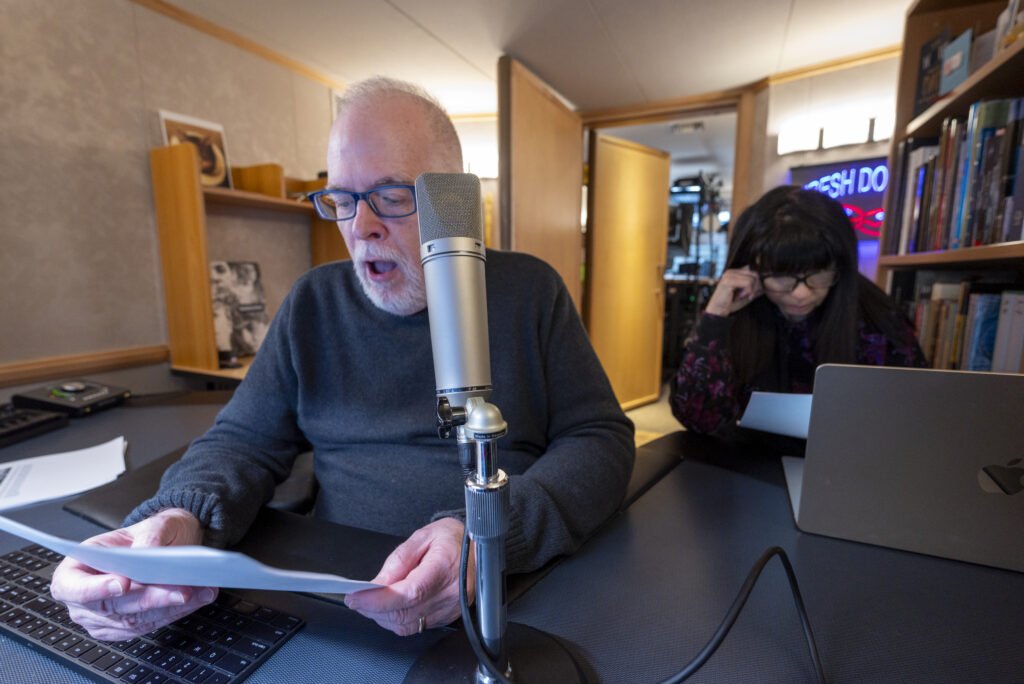
Most of the time, the Cutlers break for lunch around 12 to 1pm but remain in close proximity to their studios and ready to work if a voiceover is sent. Although their schedules are strenuous, there is an empirical reprieve in the evening with the bi-coastal news break.
Regardless of the medium for which they are voicing, the Cutlers strive to keep the objective of the copy in mind. Within a two-minute span, they can voice sports radio, local news television and video game narration, traveling between each domain with aplomb. Referencing a quote from entrepreneur and author Scott Galloway, Jim divulged that he does a market analysis every three to five years to see where things are going. With the augmentation of artificial intelligence technology, he believes voiceover artists will effectively become obsolete within five years. Based on his experience in the industry and observations of technology, he envisions an era where a person can type a script and input keyframes to indicate inflection.
“There’s still going to be some live things,” Cutler prognosticated. “The difference is going to be that if it’s 80% AI, every single voice actor is going to be competing for the 20% that will be live that’s left. So it’ll be a part of what we do, but we’re really excited about all the other stuff that we’re doing as well.”
Located between their two studios, the Cutlers have a dedicated content area where they have a deluge of gear and equipment to be prepared within five minutes. Whether it is camera bodies, lenses, lights or tripods, they have the ability to record and produce visual content for other clients. On top of that, they are involved in numerous television projects and conduct research to create their own, eclectic content that has nothing to do with their voiceover work. A video they created on banned crayon colors, for instance, has received over 2 million views on YouTube. The voiceover work they are doing, however, is produced by other people within the entities whom they are serving.
“Ideally if we were producing, we would have our minds deeper into it and have a better understanding,” Jim Cutler said. “You can never do that because it’s written by somebody else, so you have to get there the best you can and ask questions. If it’s a regular promo, it’s usually understandable. If it’s something really special like an hour-long show or something like that, you’ve just got to ask a ton of questions.”
“We’re all over the map depending on what they send, so if you have on-camera sound, you know how your V/O track is going to work with that on-camera sound [and] what hole you’re filling,” Dawn Cutler added. “That’s why you want to know about timing, and see the raw video and then also you want to hear the music track or tracks.”
Jim Cutler believes that artificial intelligence will be adequate in voiceover within two years, evidenced by the rapid development and investments being made into the space. When the day comes to turn off the microphones, he and Dawn will spend more time behind the camera to produce owned content and participate in other projects. Even within their work on a typical winter day, they approach it with recondite perspectives gained through diversified experiences.
“Because we’re content creators, when we’re especially working with TV or radio, we can actually do a lot of production and a lot of editing and everything else, so we know how time-consuming it is,” Dawn Cutler said. “So we’re committed to making that edit or that production window very, very seamless for you: the producer.”
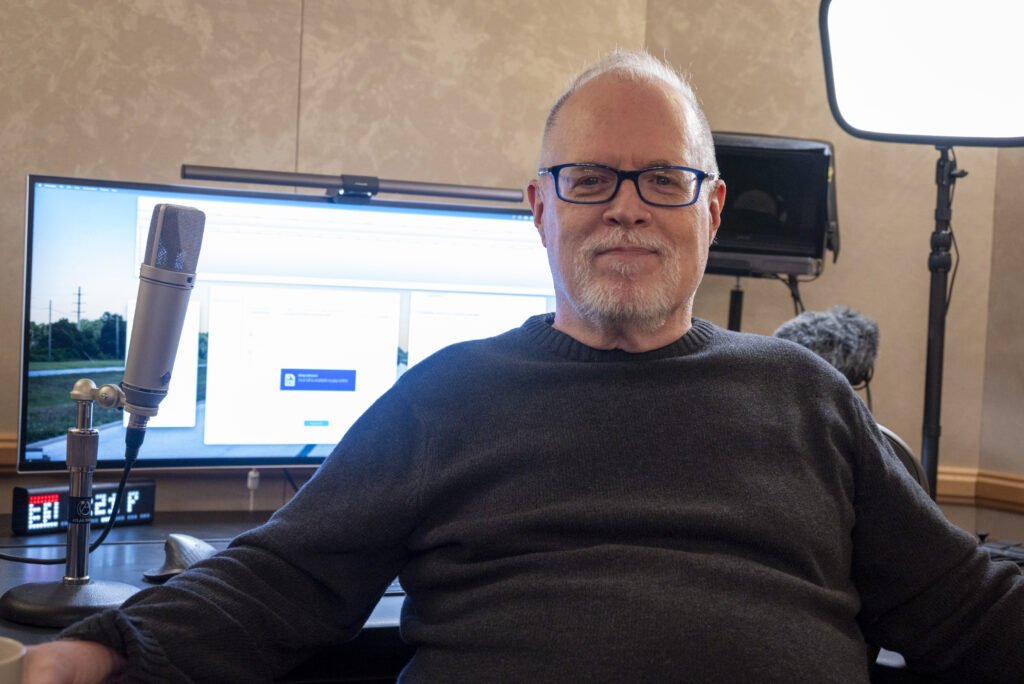
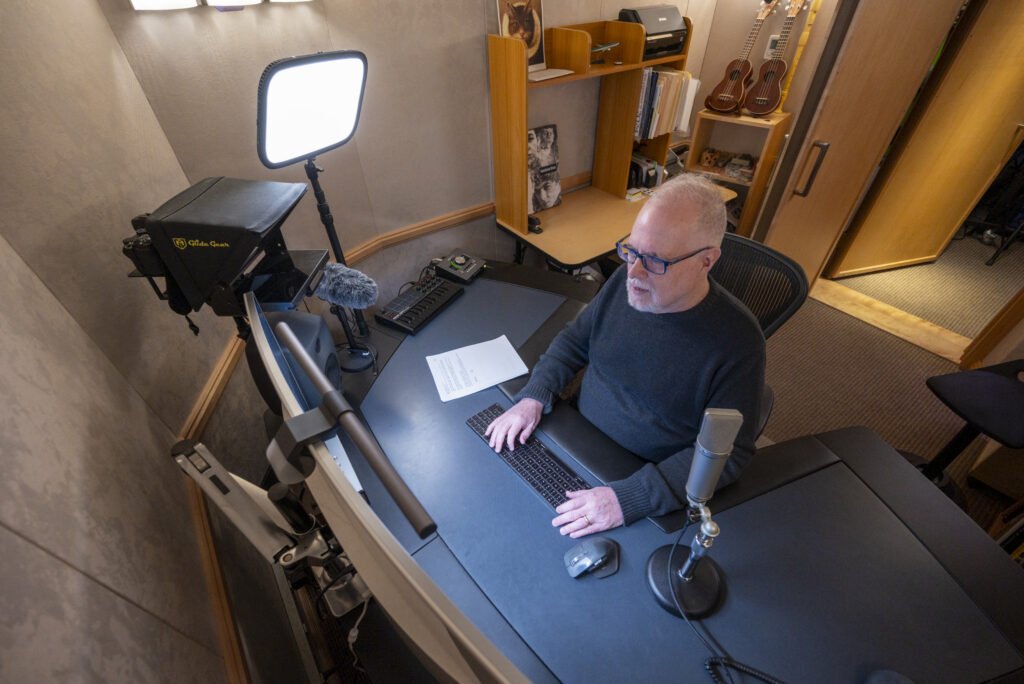


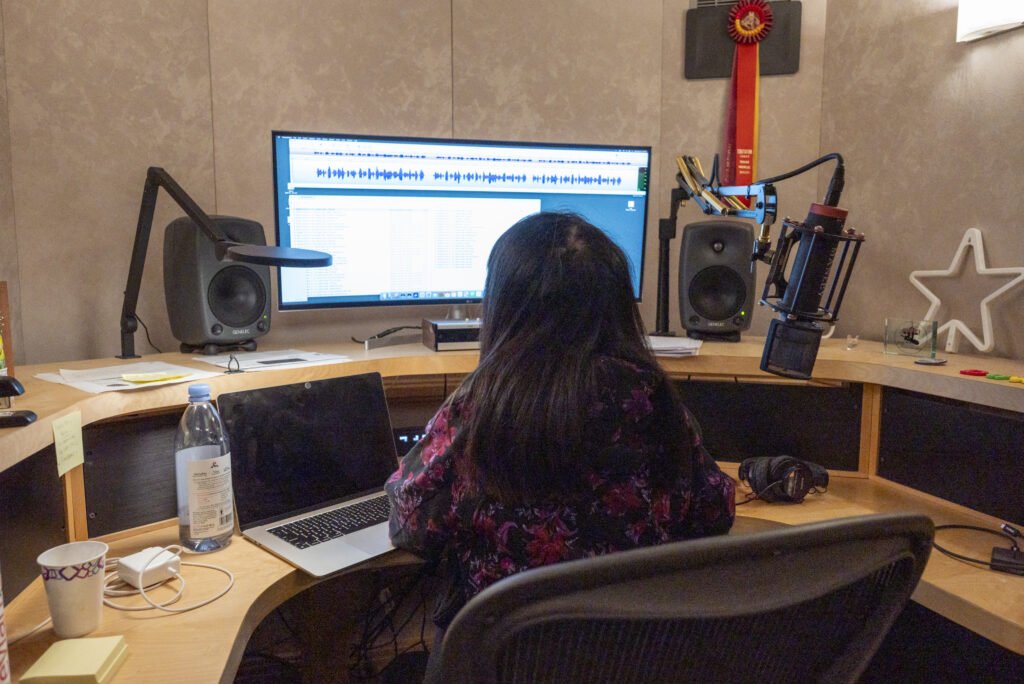
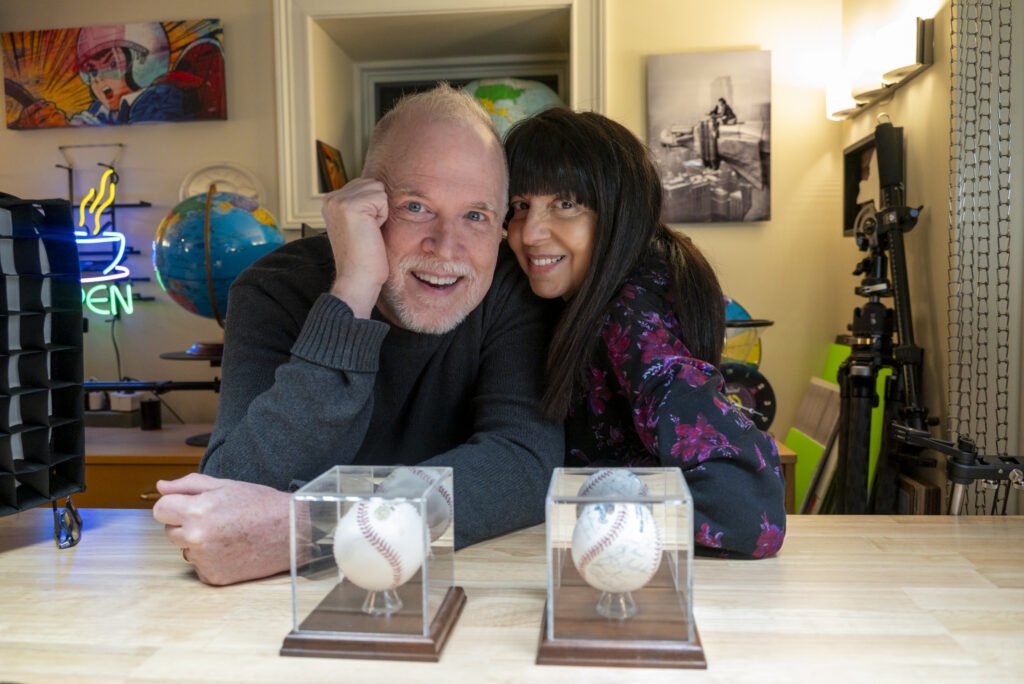
While media has endured record numbers of layoffs over the last year because of rising costs, altered revenue sources and emerging technologies, the demand for compelling, relevant content is extremely high. With all of the different projects, the Cutlers keep busy and are virtually always on call during active times, including the Super Bowl and U.S. presidential election.
“I can’t believe radio stations don’t replace a lot of their fluffy promos with dopamine-hitting, adrenaline-hitting news items that are made fresh for you every single day in the news,” Jim Cutler said. “You don’t have to write it. History writes it. You just take it and report it and make it interesting.”
Jim and Dawn Cutler have recorded hundreds of thousands of voiceovers over their years in the business, but they remain captivated and enthralled with their work because of its variety and inherent dynamism. As they work in their respective studios, it is evident that they have a passion and a gift for content creation, and are devoted to helping brands create and refine content. Whether or not Jim’s prediction comes true of his job being superseded in the next five years, he knows there are benefits to working with he and Dawn today centered on manufacturing stellar content – not a desk clock embedded with their logo inside.
“I think that using somebody externally can give your station a brand from outside your own people, and hopefully that person is experienced so that they can bring to the copy something more than just saying the words,” Jim Cutler said. “It’s still in demand, and it’s still interesting. Every time I think, ‘Okay, I’ve reached my limit as far as what I can learn,’ I’ll listen to other people and go, ‘Oh no, I can do better than that.’”
Derek Futterman is an associate editor and sports media reporter for Barrett Media. Additionally, he has worked in a broad array of roles in multimedia production – including on live game broadcasts and audiovisual platforms – and in digital content development and management. He previously interned for Paramount within Showtime Networks, wrote for the Long Island Herald and served as lead sports producer at NY2C. To get in touch, email Derek@BarrettMedia.com or find him on X @derekfutterman.




